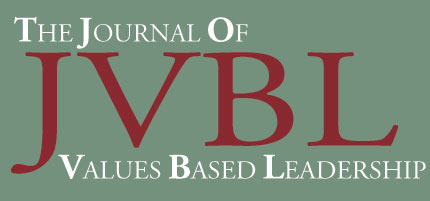- CONTENTS:
- Table of ContentsLetter from the Editor1st Source Bank: A Partner from the Great Depression through the Economic RecessionAuthentic Identity: The Essence of How Successful “Ecopreneurs” CommunicateAccounting Ethics Education: An Authentic Value-Based ApproachValues-Based Leadership and Happiness (Enlightened Leadership Improves the Return on People)The Values-Based RevolutionPower, Responsibility & Wisdom: Exploring the Issues at the Core of Ethical Decision-Making and Leadership
- 1ST SOURCE BANK: A PARTNER FROM THE GREAT DEPRESSION THROUGH THE ECONOMIC RECESSION
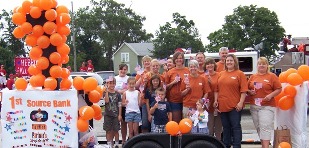
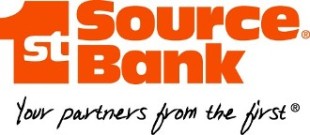 ELIZABETH GINGERICH, J.D., EDITOR
ELIZABETH GINGERICH, J.D., EDITOR
JOURNAL OF VALUES-BASED LEADERSHIP
VALPARAISO, INDIANAIntroduction
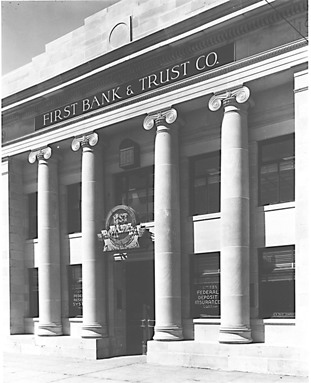 According to the Federal Deposit Insurance Corporation (FDIC) — the official government-appointed receiver of failed bank assets — over 175 banks have been closed through voluntary measures or directly by the FDIC since October 1, 2000. Over 75% of these closures occurred in 2009. Before this downward slide, depositors were insured up to $100,000 for all accounts at any one bank. On October 3, 2008, this insurance protection was increased to $250,000 per depositor. With little expectation of a quick fix in the banking industry, on May 20, 2009, the FDIC extended this additional coverage through December 31, 2013. However, the historical protection of $100,000 per depositor will be reinstated for all account categories on January 1, 2014 (except for certain retirement accounts which will remain at $250,000) (http://www.fdic.gov/bank/individual/failed/banklist.html).
According to the Federal Deposit Insurance Corporation (FDIC) — the official government-appointed receiver of failed bank assets — over 175 banks have been closed through voluntary measures or directly by the FDIC since October 1, 2000. Over 75% of these closures occurred in 2009. Before this downward slide, depositors were insured up to $100,000 for all accounts at any one bank. On October 3, 2008, this insurance protection was increased to $250,000 per depositor. With little expectation of a quick fix in the banking industry, on May 20, 2009, the FDIC extended this additional coverage through December 31, 2013. However, the historical protection of $100,000 per depositor will be reinstated for all account categories on January 1, 2014 (except for certain retirement accounts which will remain at $250,000) (http://www.fdic.gov/bank/individual/failed/banklist.html).Table 1: Bank Closings since October 1, 2009
Bank Name
City
State
Closing Date
Updated Date
Fort Myers
FL
November 20, 2009
November 24, 2009
San Clemente
CA
November 13, 2009
November 18, 2009
Naples
FL
November 13, 2009
November 17, 2009
Sarasota
FL
November 13, 2009
November 18, 2009
San Francisco
CA
November 6, 2009
November 9, 2009
St. Louis
MO
November 6, 2009
November 9, 2009
Oakdale
MN
November 6, 2009
November 9, 2009
Detroit
MI
November 6, 2009
November 9, 2009
Sparta
GA
November 6, 2009
November 9, 2009
Houston
TX
October 30, 2009
November 3, 2009
Madisonville
TX
October 30, 2009
November 3, 2009
Teague
TX
October 30, 2009
November 3, 2009
Chicago
IL
October 30, 2009
November 3, 2009
San Francisco
CA
October 30, 2009
November 3, 2009
Los Angeles
CA
October 30, 2009
November 3, 2009
San Diego
CA
October 30, 2009
November 3, 2009
Lemont
IL
October 30, 2009
November 3, 2009
Phoenix
AZ
October 30, 2009
November 3, 2009
Westmont
IL
October 23, 2009
November 3, 2009
Otsego
MN
October 23, 2009
November 3, 2009
Racine
WI
October 23, 2009
November 3, 2009
Bradenton
FL
October 23, 2009
October 29, 2009
Naples
FL
October 23, 2009
October 28, 2009
Lawrenceville
GA
October 23, 2009
October 28, 2009
Naples
FL
October 23, 2009
October 28, 2009
Bakersfield
CA
October 16, 2009
October 21, 2009
Pueblo
CO
October 2, 2009
October 20, 2009
Spring Grove
MN
October 2, 2009
October 20, 2009
Warren
MI
October 2, 2009
October 20, 2009
Atlanta
GA
September 25, 2009
October 13, 2009
Smaller, hometown bank closures — ranging from the Riverview Community Bank of Otsego, Minnesota to the Flagship National Bank of Bradenton, Florida — combined with the negative impact generated by more cognizable, megalithic banks dominating the news headlines, have adversely shaken consumer and creditor confidence. But why is this occurring at such an alarming rate? Greed, mismanagement, incompetency? Or a combination of all of these factors in varying proportions?In a country where the banking industry seems to have sacrificed integrity for the quick commission (i.e., a pattern which has been more prevalent with the investment banking model and its “pay for transaction” approach as opposed to the commercial banking model and its “pay for service over the long-term” practice), it appears that our financial institutions have foregone their fiduciary responsibilities to their stakeholders. And in a world where businesses myopically focus upon rapid expansion and growth without due concern for exercising fiscal common sense and ethical decision-making, at least one hometown, family-owned, financial institution is keeping things honest… and local.
Its Beginnings
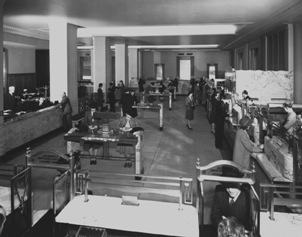 Just two weeks after President Abraham Lincoln’s delivery of the Gettysburg Address, 1st Source Bank’s predecessor, First National Bank, opened for business on November 30, 1863 in South Bend, Indiana, with capital stock of over $100,000. One of its first shareholders was Schuler Colfax, who went on to become Vice President of the United States under Ulysses S. Grant. In 1928, First National became the first bank in the city and the 15th in the nation to change from teller cages to a counter system. Its resources had grown to nearly $2.0 million.
Just two weeks after President Abraham Lincoln’s delivery of the Gettysburg Address, 1st Source Bank’s predecessor, First National Bank, opened for business on November 30, 1863 in South Bend, Indiana, with capital stock of over $100,000. One of its first shareholders was Schuler Colfax, who went on to become Vice President of the United States under Ulysses S. Grant. In 1928, First National became the first bank in the city and the 15th in the nation to change from teller cages to a counter system. Its resources had grown to nearly $2.0 million.During the Great Depression, the bank completed a merger and became known as the First Bank and Trust Company in 1931. The bank completed its final name change in the 1980s and became known as it is today: 1st Source Bank. Despite the title changes, the final name has remained as a way to identify with the customer and “to better reflect the diversity of our products and services” (http://www.1stsource.com/corporate/our_history.cfm).
Throughout its history, “these products and services” are consistently provided with the company’s self-proclaimed values of “integrity, superior quality in everything we do, outstanding customer service, teamwork, and community leadership” (http://www.1stsource.com/corporate/our_values.cfm). Rather than subscribe to the more ethically-compromised, prosaic goal of “profits above all else,” 1st Source has espoused a different philosophy: “The 1st Source mission is to help individuals, institutions, businesses, and communities achieve security, build wealth, and realize their dreams” (http://www.1stsource.com/corporate/our_mission.cfm). But this company does more than simply pay lip-service to pleasant-sounding ideals: it engages the individual “with straight talk and sound advice” (Murphy, January, 2010).
An Oxymoron?
An honest bank? In the Spring of 2009, Forbes and Audit Integrity named 1st Source Corporation — parent company of 1st Source Bank — as one of America’s “100 Most Trustworthy Public Companies” from among more than 12,000 publically traded companies. The metrics used to render this assessment included financial reporting transparency, values-based governance, and strict accounting standards. Additionally, Bank Director Magazine ranked 1st Source as thirtieth among the nation’s “Top Performing Banks” with respect to profitability and stable capitalization. On April 22, 2009, the South Bend Tribune showed off its home-spun creation as a success in the midst of Treasury Secretary Timothy Geithner’s proclamation that despite bailout monies, the country’s largest banks were still broken. 1st Source also has other accomplishments bestowing bragging rights. In the region, it has the lowest number of mortgage delinquencies and charge-off rates. Equity capital is in excess of 14% even without the Troubled Asset Relief Program (TARP)1 monies while the national average is closer to 10%. Additionally, the bank has received:
- A 5 Star Superior Rating from BauerFinancial (www.bauerfinancial.com);
- a B+ ranking as one of the nation’s strongest banks; and
- the highest level of capitalization rating by federal regulators.
These accolades are incongruent to current trends. The predatory lending and disastrous borrowing practices that have been toppling banks like dominoes over the last several years have shared one common descriptive phrase: emphasis has been misplaced on the transaction as opposed to cultivating the individual relationship. 1st Source Chairman and CEO Christopher Murphy III has attempted to identify the root problems which precipitated this downward fall: de-regulation, investor greed, incompetency, legislative failures, and quick-transaction schemes. In addition to Wall Street, Murphy places some of the blame on Washington, claiming that:
- The Community Reinvestment Act,2 originally enacted in 1977 to reduce discriminatory credit practices in low to moderate-income neighborhoods, overshot its intended aim to ensure community security;
- Freddie Mac and Fannie Mae,3 often pinpointed as the two mortgage monsters at the eye of the sub-prime firestorm in 2009, recklessly invested their assets in lower quality loans to increase home ownership. This led to a change in home ownership from 63% recorded in 1993 to 68% of the population by 2008 (Wallison, 2009). These practices were further supplemented by the enactment of the American Dream and Down Payment Act4 and its progeny; and
- The repeal of the Glass-Steagall Act,5 originally passed by Congress during the Great Depression to separate commercial and investment banking and the imbedded conflicts of interest and to protect the nation’s economy from financial crises. The repeal further obfuscated critical regulatory controls and created an atmosphere favorable for risky, investment schemes, ultimately leading to the bank bail-outs of 2008-2009.
- Murphy opines that the synchronization of Washington practices with Wall Street demands led the country in the wrong direction. Instead, the small, regional banks like 1st Source “know what a community needs and take a long view.”
Core Values
So what makes 1st Source seemingly impervious to the systematic corruption which nearly launched a second Great Depression?
With assets totaling 4.6 billion dollars, over 75 banking centers in 17 counties, 95 ATMs, 7 insurance offices, and 7 Trust and Wealth Management offices, 1st Source is the largest, locally-controlled financial institution in Northern Indiana/Southwestern Michigan. (“Press Releases,” http://www.1stSource.com). Its ranking as “top performing” and “most trustworthy” is not just measured against small town banks and regional financial institutions, but includes such megabanks as Wells Fargo, Citibank, and JP Morgan Chase. This is quite an achievement especially in a tanking, volatile economy, where largesse signals anxiety.
 According to the New York investing firm of Sandler O’Neill & Partners, L.P., the salient features of the top performers listed on the 2009 scorecard signal a retreat to the more simplistic values of customer concern and attentiveness, respect for colleagues, the substitution of an entrenched hierarchical workforce for more collective and effective governance, and a firm commitment to community involvement. These characteristics are somewhat reminiscent of the message of E.F. Schumacher’s revolutionary “small is beautiful– economics as if people mattered” message in the early 1970s. Simple common sense dictates that uncontrolled and unfettered growth often breeds lack of control, unsupervised management, and loss of principles. The collective good often becomes obscured in the personal quest for consummating the quick transaction.
According to the New York investing firm of Sandler O’Neill & Partners, L.P., the salient features of the top performers listed on the 2009 scorecard signal a retreat to the more simplistic values of customer concern and attentiveness, respect for colleagues, the substitution of an entrenched hierarchical workforce for more collective and effective governance, and a firm commitment to community involvement. These characteristics are somewhat reminiscent of the message of E.F. Schumacher’s revolutionary “small is beautiful– economics as if people mattered” message in the early 1970s. Simple common sense dictates that uncontrolled and unfettered growth often breeds lack of control, unsupervised management, and loss of principles. The collective good often becomes obscured in the personal quest for consummating the quick transaction.Tradition!
One of the defining phrases of Fiddler on the Roof — “Because of our traditions, everyone knows who he is and what he is expected to do” — could well describe the corporate philosophy of 1st Source. While certain traditions can stifle diversity and compromise innovation, historical core values of garnering trust and respect are critical ingredients to this bank’s success. Both exotic and unconventional loan products and financial practices are systematically eschewed by this steady, persevering bank. Instead, uncalculated risks are avoided and lending is predominantly directed to individuals and businesses with sound credit histories while community involvement at all levels is practiced. Construction and development lending has been virtually jettisoned by this high-performing, stable institution.
How can the practices of this one bank inspire mimicry? Does the answer lie in increasing the number and/or broadening the scope of laws? With a plethora of banking and securities regulations, how is it that a man such as Bernie Madoff — former Chairman of the NASDAQ Stock Exchange — could infiltrate the financial scene and defraud so many individuals, businesses, and not-for-profits under the radar of so many regulators and regulations?
At a 1st Source corporate meeting held in July, 2009, Chairman Murphy delivered a speech that was truly telling about the philosophy of the organization:
“What we need is not necessarily more laws; we have plenty of these. What we truly need are better referees.”
And, prolifically,
“We care about what happens in our communities. With other financial institutions, there appears to be no sensitivity to relationships. When the focus is on productivity, employees and customers are sacrificed in the process. …. We encourage independent thinking amongst our employees without threat of reprisal for communication of divergent views.”
1st Source has striven to provide the best education of its employees and to infuse diversity throughout its workforce. As the company places key emphasis on management succession, it subsidizes educational support in the process (several officers have completed the Notre Dame Executive MBA program). Chairman Emeritus of the bank, Ernestine M. Raclin, helped pioneer new avenues of opportunity to promote a more diverse employee base. Upper-level management shows a greater infusion of females and minorities. The bank has recognized the needs of its communities by taking steps to offer bilingual assistance as well.
The bank has consistently rejected the tendencies of other banks to produce and promote “teaser rates” which lure in additional customers who ultimately must face unexpected balloon payments, and ultimately, in so many cases, eviction, foreclosure, and homelessness. Inflating asset values is eschewed; “pump and dump” strategies are anathema to the history and stability of this banking system.
According to 1st Source Bank Senior Vice President Robert Ax, when lending moved from a case-by-case analysis and full relationships to a commission-based transaction approach where numbers trumped quality of services, many banks succumbed to this unadulterated greed and began the downward spiral. The introduction of hedge funds and other private financial schemes flooded the market below the radar screen and out of regulatory reach were the final nails in the coffin. According to Ax, the successful banking strategy is really very simple:
“If the assets are unstable and futures unpredictable, don’t buy the portfolio.”
As testament to building long-lasting security, approximately 2 ½ - 3% of 1st Source’s assets are maintained as reserves.
Response to Challenging Times
1st Source, formerly operating as First National Bank in South Bend, was certainly not insulated against the events of “Black Tuesday.” October 29, 1929 ushered in the decade-long Great Depression and First National Bank suffered economically in much the same manner as other financial institutions. Stocks plummeted and boom went to bust sparing very few businesses. But within the next several years, future thinking and additional capitalization led to the merger of First National Bank with the Indiana Trust Company in 1931 to form the First Bank and Trust Company. By 1925, the bank had assets exceeding $8.0 million. The hardships of the Great Depression actually tested the resolve of the bank’s founders and by the end of the Second World War, the bank had even ventured into novel banking practices such as drive-up windows while strengthening its asset base with a recorded $43.4 million in deposits.
The City of South Bend experienced another financial challenge when one of its largest employers, the Studebaker Corporation, closed its manufacturing facility in December of 1963, leaving 7,000 men and women unemployed and eliminating a $50.0 million annual payroll. First Bank and Trust Company responded by both deferring loan repayments and making transition loans. By the end of the 1960s, the bank had actually opened six new branches and boasted assets of 169.2 million with deposits exceeding $135 million.
The tragic events of September 11, 2001, exacerbated an already weakened economy predominantly in the technology and manufacturing sectors and more locally in aircraft and rental car financing. Against the odds, the bank actually expanded its markets by opening 17 new markets in Northern Indiana and Southwestern Michigan. By the end of 2001, the bank had increased its total number of branches to 64.
As 1st Source currently operates in geographical regions demarcated by a vulnerable workforce, rising unemployment rates, and historically high foreclosures, all of this against a backdrop of increased FDIC insurance premiums and Sarbanes-Oxley6 reporting requirements, harsh decisions have had to be made. Such economic uncertainty in the midst of the nation’s worst sub-prime lending crises has ostensibly not left the bank immune to the country’s economic woes. In 2009, the bank declared its participation in TARP — “as insurance against a crushing economy” (Murphy, 2010) — and will reportedly benefit from $111 million in government investment. This is despite a report — contradicted by the bank — released in 2009 that quoted the bank’s approved TARP funds at $127.7 million (Shen, 2009). The decision to participate in this program, as Chairman Murphy explains, is aligned with the bank’s dedication to its core values that kept it relatively safe from the brunt of the crisis as well as to its ongoing commitment to serve its markets and to help other institutions that might fail within such markets. Murphy states:
“As we look across the industry, especially at what is happening to the large commercial and investment banks, I am thankful that we stuck to strong and basic lending principles. We have no Alt. A or sub-prime mortgages; a very large majority of the mortgages we have made are in the communities we serve.”
While the key emphasis of TARP was the purchasing of toxic assets, its application was in capital investments. Murphy explains that 1st Source is using the funds to assure it has strong funding and could improve market lending in any economic environment. The bank has decided to retain its allocated TARP monies until it is sure that that the economy is improving on a sustained basis. In this regard, it continues to exercise extreme caution and practice rigorous cost control. Like most decisions 1st Source makes, its rationale behind avoiding sub-prime mortgages has just as much to do with the client’s well-being as with its own. According to Murphy,
“We have continued to be concerned about political pressures to make inappropriate loans. We have avoided those pressures in the past because we have always felt debt could become an impossible burden for people, limiting, rather than increasing, their quality of life.”
Although not directly affected by risky lending practices, Murphy states that it was primarily the prospect of being able to provide more loans to the creditworthy in the community, as well as having extra back-up money in case of further and deeper repercussions from the economic recession, that ultimately “overpowered [its] reluctance to accept an expensive equity investment and increased regulatory oversight by the federal government” (http://www.reuters.com/article/pressRelease/idUS201215+23-Jan-2009+BW20090123?symbol =SRCE.OQ).
In order to better understand the situation of 1st Bank in its acquisition of TARP monies vis-á-vis other recipient financial institutions in the country, Table 2 measures the percentage of TARP funds to total assets of six of the country’s largest financial institutions together with 1st Source, as well as Alpine Bank, another small, locally-owned bank which is headquartered in Glenwood Springs, Colorado.
Table 2: Percentage of TARP Funds to Total Assets
Financial Institution
Amount Received in
TARP Funds
Total Assets as of 09/30/2009
Percentage of TARP Funds to Total Assets
Alpine Bank
$70 million
$2,734,264,000
.026%
First Source Corp.
$111 million
$4.4 billion
.025%
Capital One
$3,555,199,000
$168.5 billion
.021%
Wells Fargo
$25 billion
$1.23 trillion
.02%
Citigroup Inc.
$25 billion
$1.89 trillion
.013%
Morgan Stanley
$10 billion
$770 billion
.013%
Goldman Sachs
$10 billion
$882.19 billion
.011%
Bank of America
$15 billion
$2.25 trillion
.007%
Community Support
 Examining the company’s own 2008 Community Involvement Report, it is apparent that 1st Source gives back to the communities in which it operates. Since 2004, its annual donations to various organizations have consistently exceeded one million dollars, reaching its highest charitable contributions in 2008 with cumulative expenditures of $1,182,922 (http://www.1stsource.com/corporate/ourvalues.cfm).
Examining the company’s own 2008 Community Involvement Report, it is apparent that 1st Source gives back to the communities in which it operates. Since 2004, its annual donations to various organizations have consistently exceeded one million dollars, reaching its highest charitable contributions in 2008 with cumulative expenditures of $1,182,922 (http://www.1stsource.com/corporate/ourvalues.cfm).A noticeably large majority of donations have been directed to educational endeavors, including the innovative funding of an i-stan human patient simulator that will benefit nursing students at Ancilla College. Other categories of causes that constitute 1st Source’s contributions relate to social welfare and human services, civic and community organizations, and culture and the arts. Several of the recipient organizations in 2008 include Indiana University - South Bend, Woodlawn Hospital - Rochester, and Northeast Indiana Innovation Center - Fort Wayne. Also, throughout 2008, the company provided assistance to Meals on Wheels™, sponsorship for a home renovated by Rebuilding Together™, and help for creating a new award for the University of Notre Dame’s faculty members commercializing intellectual property.
 1st Source strives to continuously benefit its employees and clients. Its slogan – “your partners from the first” – espouses a symbiotic relationship of financial success between the institution and the client. In an effort to demonstrate appreciation of others contributing to their own communities, 1st Source has granted the Ernestine M. Raclin Community Leadership Award each year to those from the communities they serve who have exhibited an outstanding dedication to volunteerism. This award rewards the recipient monetarily and additionally provides 1,000 for the recipient to direct to a charity of this or her own choosing.
1st Source strives to continuously benefit its employees and clients. Its slogan – “your partners from the first” – espouses a symbiotic relationship of financial success between the institution and the client. In an effort to demonstrate appreciation of others contributing to their own communities, 1st Source has granted the Ernestine M. Raclin Community Leadership Award each year to those from the communities they serve who have exhibited an outstanding dedication to volunteerism. This award rewards the recipient monetarily and additionally provides 1,000 for the recipient to direct to a charity of this or her own choosing.Other charities that have received assistance from 1st Source have included Humanity World Build™, Women’s Task Force, Mennonite Church - US, Studebaker National Museum, Baker Youth Clubs, Encore Performing Arts, Family & Youth Services Bureau, Koscisuko County Community Foundation, and the Northern Indiana Historical Society.
The Future
Despite the current troubled times for American banks, 1st Source is maintaining its tradition of giving and integrity, and thus remains optimistic about the future. As Chairman Murphy articulated, “We are strong, stable, local, and personal, and we want to be here tomorrow and years from now serving each new generation of clients. We are an intergenerational bank and want to serve our clients’ children, grandchildren, and great-grandchildren.”
1st Source currently serves over 110,000 households — in excess of 19.8% of the regional share. Ostensibly, the recipe for this bank’s success has been its teamwork, community leadership, and outstanding client service.
_____________________________________________________________________________________
ENDNOTES
1The Troubled Asset Relief Program (TARP) is a program of the United States government to purchase assets and equity from financial institutions to strengthen its financial sector. It is the largest component of the government's measures in 2008 to address the subprime mortgage crisis. Part of the Emergency Economic Stabilization Act of 2008 (Division A of Pub.L. 110-343, enacted October 3, 2008), TARP was enacted in response to the subprime mortgage crisis authorizing the United States Secretary of the Treasury to spend up to $700 billion to purchase distressed assets, especially mortgage-backed securities, and to promote capital lending.
2The Community Reinvestment Act, enacted as Public Law 95-128, Title VIII, 91 Stat. 1147, 12 U.S.C. § 2901 et seq.) is a federal law which was originally designed to encourage commercial banks and savings associations to meet the needs of borrowers in all segments of their communities.
3Created by Congress in 1938, Fannie Mae (formerly known as the Federal National Mortgage Association (FNMA)) was originally part of the Federal Housing Administration (FHA) and designed to bolster the housing industry during the Great Depression. Freddie Mac, formerly known as the Federal Home Loan Mortgage Corporation (FHLMC), was created with a similar mission of guaranteeing a continuous flow of funds to mortgage lenders. While not direct lenders, Fannie Mae and Freddie Mac are the largest underwriters of home mortgages. Although credited for having opened the door to homeownership to individuals who would normally not otherwise qualified for more conventional loans, over the years mortgage lenders have grossly abused this form of lending insurance.
442 U.S.C. §12821 as amended.
5The Glass–Steagall Act of 1933 established the Federal Deposit Insurance Corporation (FDIC) in the United States and included banking reforms, some of which were designed to control the financial speculation explosion of the last decade.
6Sarbanes-Oxley Act of 2002, also referred to as The Public Company Accounting Reform and Corporate Responsibility Act, (January 5, 2009, 15 U.S.C. Chapter 98).
__________________________________________________________________________________________
REFERENCES
“1st Source Agrees to Participate in Treasury Department Capital Purchase Program.” 23 January 2009, <<http://www.reuters.com/article/pressRelease/idUS201215+23-Jan2009+BW20090123?symbol=SRCE.-OQ>>). Visited 18 November 2009.
“1st Source Agrees to Participate in Treasury Department Capital Purchase Program,” 23 January 2009. <<http://www.reuters.com/article/pressRelease/idUS201215+23-Jan2009+BW20090123?symbol=SR CE.OQ>> Visited 18 November 2009.
“1st Source Agrees to Participate in Treasury Department Capital Purchase Program,” 23 January 2009. <<http://www.reuters.com/article/pressRelease/idUS201215+23-Jan-2009+BW20090123?symbol=SR CE.OQ>> Visited 18 November 2009.
“Bailed out Banks,” CNNMoney.com. <http://www.money.cnn.com/news/specials/storysupplement/bankbailout> Visited 23 November 2009.
Clark, Andrew 2008. “Paulson abandons plans to buy up America’s toxic mortgage assets.” The Guardian. <http://www.guardian.co.uk/business/2008/nov/13/harry-paulson-banking-rescue-mortgaget> Visited 13 November 2009.
“Community Involvement Report,” <http://www.1stsource.com/corporate/our_values.cfm> Visited 27 October 2009.
FDIC Bank List, <http://www.fdic.gov/bank/individual/failed/banklist.html> Visited 27 October 2009.
Google Finance. <http://www.google.com/finance> Visited 25 November 2009.
Lawder, David 2008. “U.S. backs away from plan to buy bad assets.” Reuters. <http://www.reuters.com/article/ousiv/idUSTRE4AB7P82008112> Visited 12 November 2009.
“Our Mission,” <http://www.1stsource.com/corporate/our_mission.cfm> Visited 2 November 2009.
“Our Values,” <http://www.1stsource.com/corporate/our_values..cfm> Visited 27 October 2009.
“Press Releases,” <http://www.1stsource.com/corporate/our_history.cfm> Visited 27 October 2009.
Raum, Tom 2008. “Bush signs $700 billion bailout bill.” National Public Radio Broadcast, 3 October 2008.
Shen, Linda 2009. “New York Community, Flagstar Win TARP Funds: Bailout Scorecard,” 2 January 2009. <http://www.bloomberg.com/apps/news?pid=20601208&refer= finance & sid=a0.uuwjXxYPI> Visited 2 November 2009.
Sweeney, Paul 2009. Bank Director. 1st Quarter, pp. 29-38.
Wallison, Peter J.2009. The True Origins of This Financial Crisis. Financial Policy Studies at the American Enterprise Institute.
____________________________________________________________________________________
SPECIAL ACKNOWLEDGEMENT
The Editor wishes to thank the following individuals who made significant contributions to this article: 1st Source Bank* Christopher Murphy, 1st Source Bank Marketing Specialist, Paige M. Mayers; 1st Source Bank Regional President and Senior Vice President, Robert G. Ax; 1st Source Bank Assistant Vice President and Branch Manager, Patricia Lahey; and University of Southern California research assistant, Olivia G.Kane.
*1st Source common stock is traded on the NASDAQ Global Select Market under “SRCE” and appears in the National Market System tables in many daily newspapers under the code name “1st Src.”
